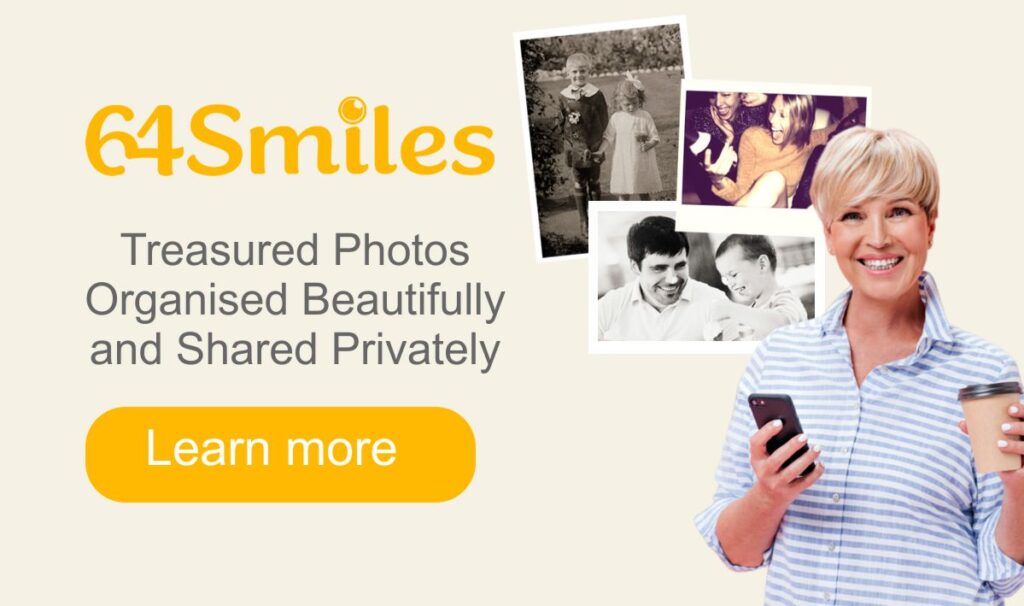When I first started exploring our collection of inherited family photos it was like opening a time capsule, with each image holding a piece of history and a story waiting to be told.
Seeing our parents in their childhood and seeing how closely we as children resembled them was an amazing experience.
However, delving further into the suitcase of old photos and as the faces in these vintage photos peered back at us, I commonly found myself pondering:
“Who are these people?”
“Could they be grandparents’ siblings perhaps?”
“Is that Uncle Pat who emigrated to America in the 1920s?”
Let’s face it, unravelling the mysteries of the past requires a keen eye, attention to detail, and a bit of detective work.
See how 64smiles can help you organise and share your photos beautifully and privately.
In this comprehensive guide, I will share our experience and explore various techniques and strategies on how to identify people in old photos, turning blurred faces into cherished family connections.
A top tip: Before diving into identification, organise your collection. Catalog photos based on common themes, locations, or time periods. This process not only streamlines the identification process but also provides a clearer overview of your family’s historical timeline.
1. Start With Those People That You Know
Start with those photographs where you already know some of the people. For example, it may be a wedding picture and you know the bride and groom, or a celebration and the main person or people are known.
Quite often in these photos there will be a group photo, family, friends, neighbours in the background.
This is a great starting point as you already know that the link is to the bride and groom or person hosting the celebration.
To help identify people in these old photos, I find it useful to zoom in on each face to see if I can link them to a family or to another person attending.
Having identified some individuals in certain photos, use those as reference points.
Compare facial features, clothing, and hairstyles across different pictures to identify commonalities.
This comparative approach can be particularly helpful in group photos.
2. Engage Family Members Especially Older Ones
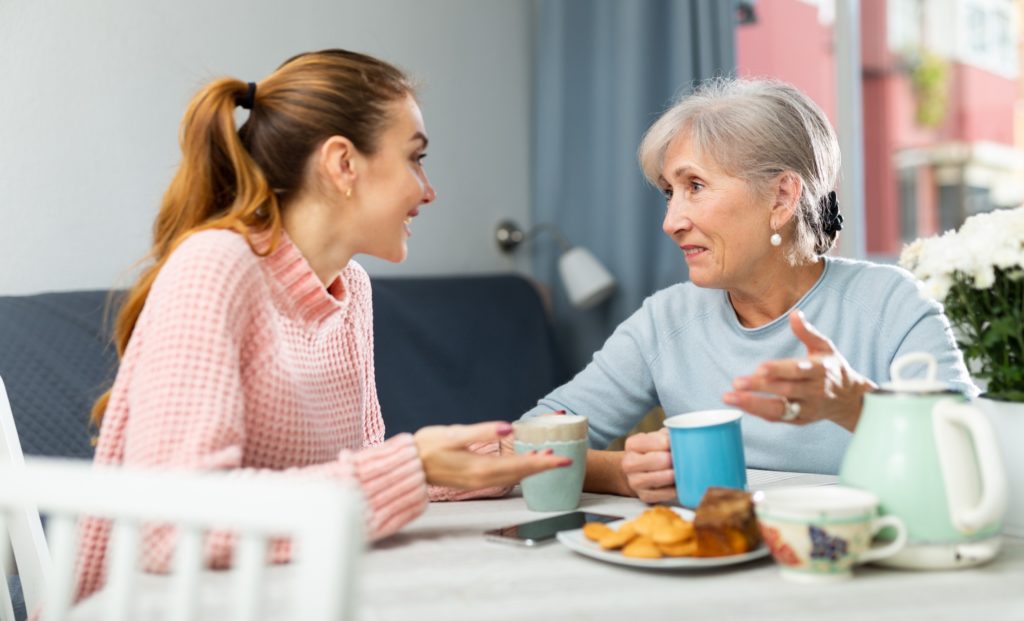
An absolute vital part of your journey to identify people in your old photos is by engaging with family members.
This is especially true for those who are older and who may hold valuable information about the people in the photos.
For example, I was able to link up with my older cousins, aunts and uncles. Quite often they were able to both identify and recall meeting the unidentified person I was searching for.
Older relatives, in particular, can provide context, stories, and anecdotes that help piece together the puzzle.
A top tip is to make this fun! Make it into a social occasion, organise a family gathering, pay visit and use the photos as a way to encourage open warm conversations about the past.
3. Study Facial Features, Clothing and Accessories in Your Old Photos
Study the facial features of individuals in the photos. Look for distinctive traits such as eye shape, nose structure, and facial expressions.
Comparing these features with known family members or other photos in your collection can aid in identification.
Fashion trends change over time, and the clothing and accessories people wear in photos can offer valuable clues.
Analyse clothing styles, hairstyles, and accessories to narrow down the timeframe.
For instance, specific clothing items or hairstyles may be associated with particular decades. Look for identifying markers, hairstyle, glasses, hats, accessories that these people have, see if you can spot these in other photos.
I very successfully used a hairstyle to identify a grandparent as a young girl. I had this photo of a young girl, well dressed aged about 6 but no clue as to who she way. However, I noticed that my grandmother had a quiet distinctive hairstyle in her wedding photo, coming down over part of her forehead. When I put the two photos together I would see the hairstyle was so similar, it had to be her as a young girl. What a discovery!
4. What’s in the Background of your Photos?
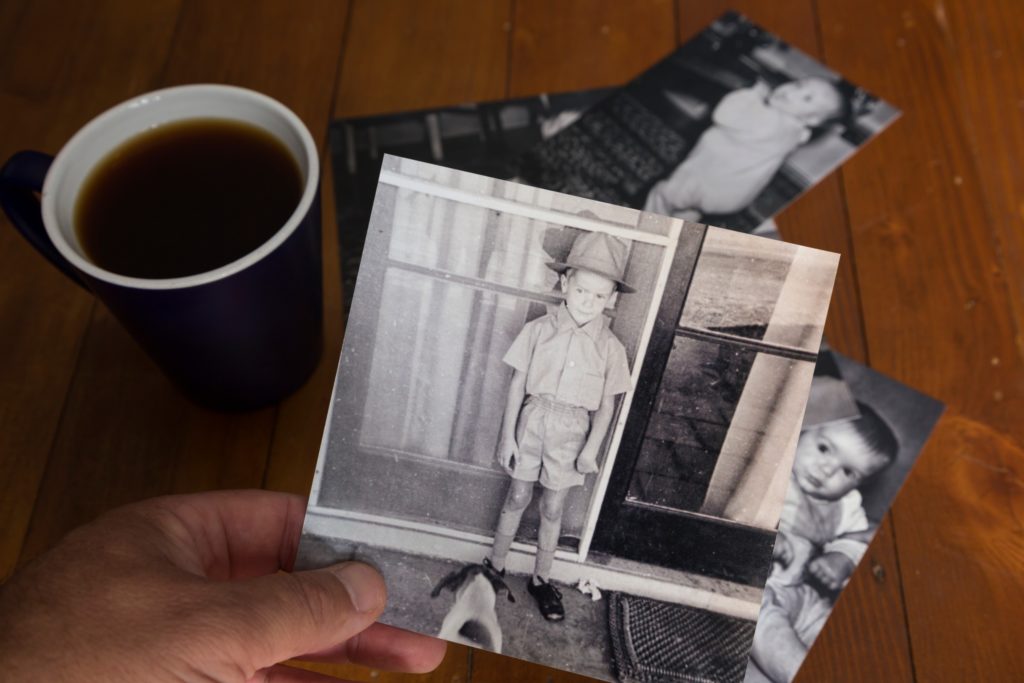
Check the background in the photo.
This is so interesting and especially if you have got the photo on your phone or tablet and you can zoom in. It is amazing what you can spot, which can be impossible to see just with the printed snap.
Perhaps there is a house or location you recognise and therefore can guess the people who lived there.
Maybe a particular landscape, trees or walls can trigger comparisons with other photos where the people are known. If so, consider who lived there or would have been likely to visit.
For interior photos check out the furniture or art on the walls and use these to help identify people in other photos.
My favourite trick is to look for any pets in the photo. A family dog or cat can reappear in the background linking people to a particular place or time.
5. Try and Date the Photographs
Try and date your pictures and put them in order.
64smiles is great for this. See here how it works.
Make notes, look back or forwards to these traits to help identify those in the main photo you are working on.
If you can date a photo, even roughly, try and work out who the small children might be from their dates of birth.
This will also help work out their parents, especially if very young and likely to be held by a parent.
Can You Help Identify These People
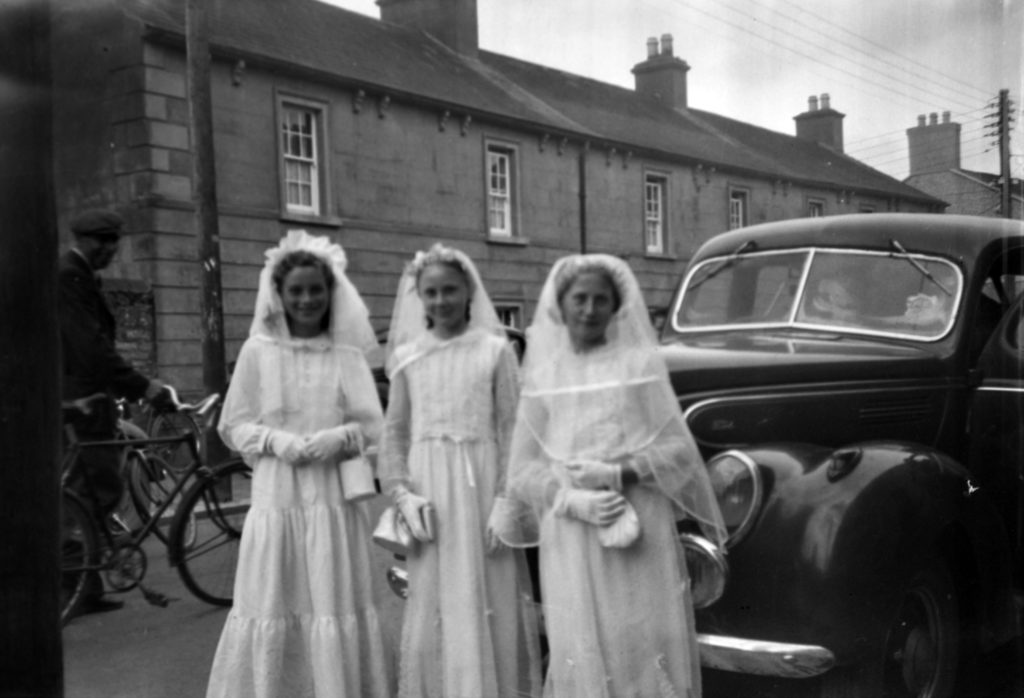
Ok so here is an old photograph I have come across in my collection. I have yet to identify the people in it however some facts I can guess pretty accurately.
- Location is a town in Ireland with typical grey stone terraced houses in the background
- I imagine somewhere in the midlands a that is where my family came from
- The old black car tells me it is taken circa 1940s
- It is either First Communion day or Confirmation and the three girls are in their white lace dresses
- As to who they are – no idea…yet.
6. Consider the Photographer’s Studio

Photographers often left their marks on photos, and the studio backdrop or logo can provide additional information.
Sometimes the studio will have a number or date on the back and this can be invaluable.
Research the photographer’s studio online, as it may have been a local establishment known for serving specific communities or families.
This will help narrow down where the person lived as most often they would not have travelled far to get their photo taken.
7. Seek Expert Assistance and Use Online Resources
In cases where identification proves challenging, consider seeking expert assistance.
Professional genealogists, historians, or even facial recognition software can provide advanced tools to aid in identifying individuals based on facial features.
Take advantage of online genealogy and historical databases. Websites like Ancestry.com, MyHeritage, and FamilySearch offer vast collections of historical records and can be valuable resources for cross-referencing names, dates, and locations.
8. Cross Check with Family Documents, Social Media and Online Resources

Family documents such as letters, diaries, or official records can provide additional context.
Check if there are any annotations or notes associated with the photos. These can offer valuable insights into the identities of the people captured.
Tap into the power of the online community. Share your unidentified photos on social media or genealogy forums, seeking input from a broader audience. Others may have similar photos in their collections or possess knowledge about the individuals in question.
Also, use census records to identify who was living at an address at a point in time. This can help pinpoint who might have been available for a family portrait at that time, especially when portable cameras become popular during the 1930s and onwards.
Learn all about Irelands photo history here.
9. Utilise Photo Metadata
If you are looking to identify people in more recent photos and you have access to digital copies of the photos, check the metadata embedded in the files.
Sometimes, this information can include details such as the date the photo was taken, the camera used, and even location coordinates.
This metadata can be a valuable resource in narrowing down the identities of the individuals.
10. Create Your Photo Family Tree with 64 Cousins
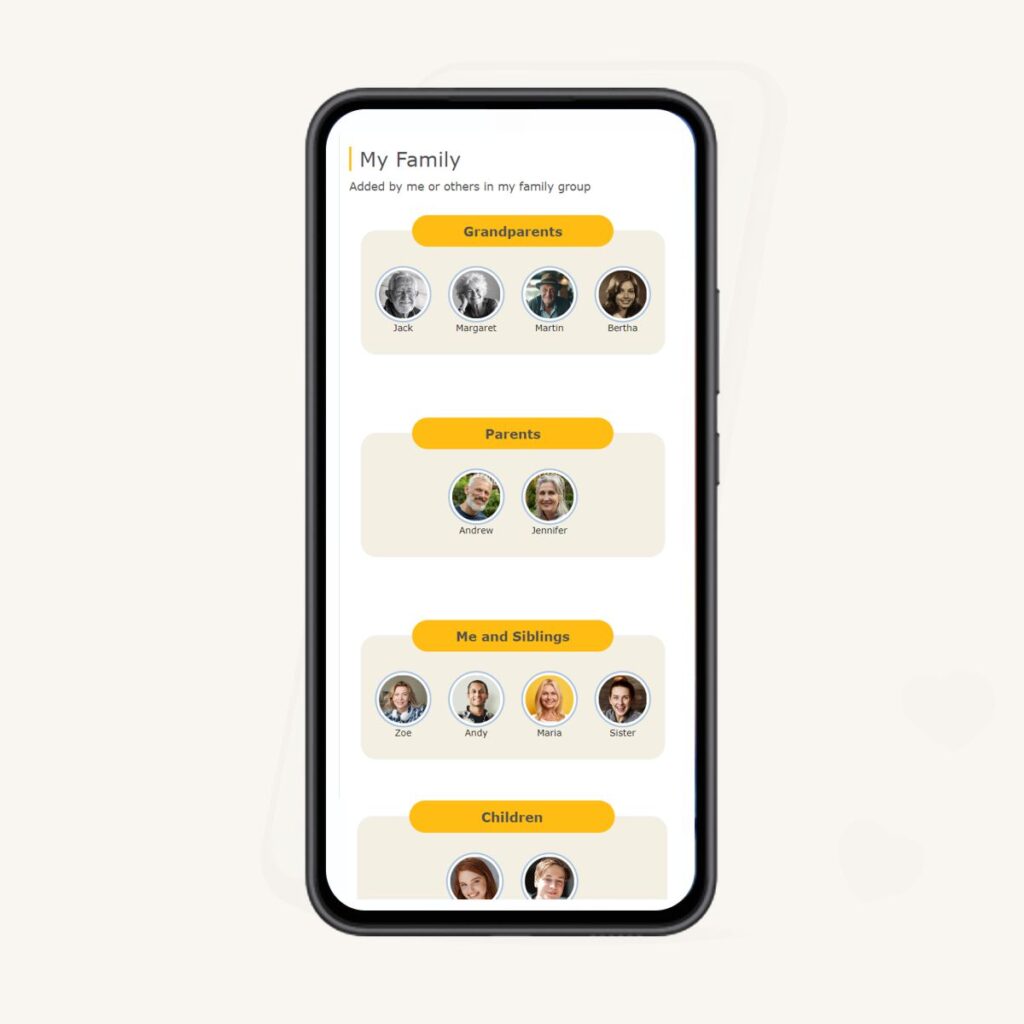
A top tip is to create your photo family tree with the 64smiles platform. This free resource will provide a visual representation of your family connections.
And as you identify individuals in old photos, add them to your family tree to create a comprehensive record.
Share with other family members.
Encourage them to comment and add information to photos where you are unsure of the people in them. In this way, you can also encourage them to share and add photo they have of ancestors and these may help identify people in your photo collection too.
It’s a lovely way to connect too and through a combination of this family engagement and shared information you can gradually unveil the stories behind the faces captured in time.

